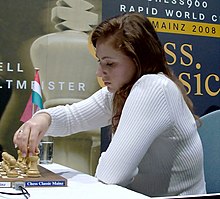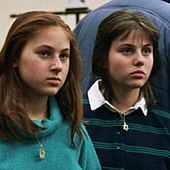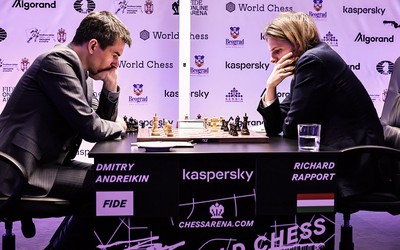
Judit Polgàr
Judit Polgàr , the best women chess playerJUDIT POLGAR
(born 23 July 1976) is a Hungarian chess grandmaster, generally considered the strongest female chess player of all time.[1] In 1991, Polgár achieved the title of Grandmaster at the age of 15 years and 4 months, at the time the youngest to have done so, breaking the record previously held by former World Champion Bobby Fischer. She was the youngest player ever to break into the FIDE top 100 players rating list, ranking No. 55 in the January 1989 rating list, at the age of 12.
Polgár is the only woman to be a serious candidate for the World Chess Championship, in which she participated in 2005; she had previously participated in large, 100+ player knockout tournaments for the world championship. She is also the only woman to have surpassed 2700 Elo, reaching a peak world ranking of No. 8 in 2004 and peak rating of 2735 in 2005.
CAREER
Polgár rarely played in women-specific tournaments or divisions and has never competed for the Women's World Championship: "I always say that women should have the self-confidence that they are as good as male players, but only if they are willing to work and take it seriously as much as male players. While László Polgár has been credited with being an excellent chess coach,the Polgárs had also employed professional chessplayers to train their daughters, including Hungarian champion IM Tibor Florian, GM Pal Benko, and Russian GM Alexander Chernin.Susan Polgár, the eldest of the sisters, 51⁄2 years older than Sophia and 7 years older than Judit, was the first of the sisters to achieve prominence in chess by winning tournaments, and by 1986, she was the world's top-rated female chess player. Initially, being the youngest, Judit was separated from her sisters while they were in training. However, this only served to increase Judit's curiosity. After learning the rules, they discovered Judit was able to find solutions to the problems they were studying, and she began to be invited into the group. One evening, Susan was studying an endgame with their trainer, a strong International Master. Unable to find the solution, they woke Judit, who was asleep in bed and carried her into the training room. Still half asleep, Judit showed them how to solve the problem, after which they put her back to bed. László Polgár's experiment would produce a family of one international master and two grandmasters and would strengthen the argument for nurture over nature, as well as prove women could be chess grandmasters.
GRANDMASTER
In December 1991, Polgár achieved the grandmaster title by winning the Hungarian National Championship, at the time the youngest ever at 15 years, 5 months to have achieved the title. This beat Fischer's record by a month. This made her the first woman to be the youngest-ever grandmaster, and the fourth woman to become a grandmaster (after Nona Gaprindashvili, Maia Chiburdanidze and Polgar's sister Susan). With this, Polgar beat her sister Susan's record for youngest-ever female grandmaster, obtained earlier in January 1991, by over 7 years. Hungary, one of the strongest chess-playing countries, had all but one of their strongest players participate in that year's championship, as only Zoltán Ribli was missing. Going into the last round, Polgár needed only a draw to achieve the GM title, but she won her game against GM Tibor Tolnai to finish first, with six points in nine games. Judit's sister Susan had earned the GM title in January 1991.
STRONGEST FEMALE PLAYER EVER
Polgár is generally considered the strongest female chess player of all time.In January 1996, she became the only woman ever to be ranked in the top ten of all chess players. In August 1996, she participated in a very strong 10-player tournament in Vienna. There was a three-way tie for first between Karpov, Topalov and Boris Gelfand and a three-way tie for fourth between Kramnik, Polgár and Lékó. In December 1996, Polgár played a match in São Paulo against Brazil's champion Gilbert Milos. The four games were played at 30 moves an hour with 30 minutes for the remainder of the game. Polgár won two, drew one and lost one and won $12,000 in prize money.
In February 1997, she played in the Linares "supertournament" which Kasparov won by edging out Kramnik. Polgár finished in clear fifth position in the 12-GM tournament, ahead of Anand, Ivanchuk, Gelfand and Shirov. Her result was considered exceptional considering the strength of the tournament, average 2701, and she was praised for her tactical skills in her game against Ivanchuk. In April 1997, she played in the Dos Hermanas Chess tournament, a single-round robin category XIX event of 10 of the world's best players. She finished in sixth place with an even score of 41⁄2–41⁄2. In June 1997, she finished with an even score, 41⁄2–41⁄2, in the Madrid 10-player GM tournament won by Topalov. In July 1997, Polgár competed in the elite Dortmund International Tournament. She finished in fifth in the strong field of ten, ahead of players such as Anatoly Karpov. In the tournament, she won playing with the black pieces against Veselin Topalov, at the time ranked fourth in the world. Topalov had the advantage until Polgár executed a deep positional sacrifice. In October 1997, she tied for second in a double round-robin tournament of four grandmasters in the VAM International Tournament in Hoogeveen, the Netherlands.
"There has long been a lively debate about who is the strongest player of all", wrote GM Robert Byrne in his New York Times column of 26 August 1997. "Prominent candidates are Bobby Fischer, Garry Kasparov, Jose Raul Capablanca, Alexander Alekhine or Emanuel Lasker. But there is no argument about the greatest female player: she is 21-year-old Judit Polgár."
MAKING HISTORY
In September 2002, in the Russia versus the Rest of the World Match, Polgár finally defeated Garry Kasparov in a game. The tournament was played under rapid rules with 25 minutes per game and a 10-second bonus per move. She won the game with exceptional positional play. Kasparov with black chose the Berlin Defence instead of his usual Sicilian, and Polgár proceeded with a line which Kasparov has used himself. Polgár was able to attack with her rooks on Kasparov's king, which was still in the centre of the board, and when he was two pawns down, Kasparov resigned. The game helped the World team win the match 52–48.Upon resigning, Kasparov immediately left by a passageway barred to journalists and photographers. Kasparov had once described Polgár as a "circus puppet" and asserted that women chess players should stick to having children. Polgár called the game "one of the most remarkable moments of [her] career". The game was historic as it was the first time in chess history that a female player beat the world's No. 1 player in competitive play. An interview with Polgár including video of the match was included in the BBC Witness radio program in 2016.
In October and November 2002, Polgár played on second board (with Péter Lékó on first) for Hungary in the 35th Chess Olympiad. While not having the stunning performance as she had in the 2000 Olympiad, she helped Hungary attain the silver medal for the event. While the Hungarians had the best win–loss record of the tournament as a team and lost only a single game of the 56 they played, they had won most of their matches by 21⁄2–11⁄2 scores, while the Russian team won gold as they piled up the points. However, Hungary gave the gold-winning Russian team its only defeat. Polgár's fourth-round game against Azerbaijan's Shakhriyar Mamedyarov included a brilliant 12.Nxf7, drawing his king into the center of the board.
By early 2003, Polgár had worked her way back into the top 10 rated players in the world.In 2003, Polgár scored one of her best results: an undefeated clear second place in the Category XIX Corus chess tournament in Wijk aan Zee, Netherlands, just a half-point behind future World Champion Viswanathan Anand and a full point ahead of then-world champion Vladimir Kramnik. One of the highlight games of the tournament was Polgár's fourth round crushing victory over Anatoly Karpov. She played a novelty in the opening which she devised over the board. The game lasted 33 moves with Karpov down two pawns and his king exposed. Polgár admitted to "enjoying herself" by the end of the game. In April 2003, Polgár finished second in The Hunguest Hotels Super Tournament in Budapest behind Nigel Short. She appeared headed for a first-place victory in the tournament, but lost her game against compatriot Péter Lékó. In June 2003, Polgár finished tied for third with Boris Gelfand, in the Enghien-les-Bains International Tournament in France, scoring 51⁄2–31⁄2, behind Evgeny Bareev who won the tournament and GM Michael Adams. In August 2003, Polgár played an eight-game rapid chess match in Mainz, Germany against Viswanathan Anand, billed as the "Battle of the Sexes". After six games each player had won three games. Anand won the final two games to win the match. In October 2003, Polgár won the 4–grandmaster Essent tournament in Hoogeveen, Netherlands. In one of her games against Karpov, he blundered, allowing Polgár to utilize a famous double bishop sacrifice first employed by Emanuel Lasker against Bauer in 1889.
In 2004, Polgár took some time off from chess to give birth to her son, Olivér. She was consequently considered inactive and not listed on the January 2005 FIDE rating list. Her sister Susan reactivated her playing status during this period, and temporarily became the world's No. 1 ranked women's player again.
Polgár returned to chess at the prestigious Corus chess tournament on 15 January 2005. The tournament, which was now considered by some as the most important in Europe, was won by fellow Hungarian Péter Lékó while Polgár scored 7/13 to tie for fourth with Alexander Grischuk, Michael Adams and Kramnik.She was therefore relisted in the April 2005 FIDE rating list, gaining a few rating points for her better-than-par performance at Corus. In May she also had a better-than-par performance at a strong tournament in Sofia, Bulgaria, finishing third. This brought her to her highest ever rating, 2735, in the July 2005 FIDE list and enabled her to retain her spot as the eighth ranked player in the world.
In September 2005, Polgár once again made history as she became the first woman to play in the final stages of the World Chess Championship qualification; she had previously participated in large, 100+ player knockout tournaments for the world championship, but this was a small 8-player invitational. However, she performed poorly, coming last of the eight competitors. However, in her game against Veselin Topalov, Polgár pushed the eventual tournament winner and world champion to a seven-hour marathon before succumbing.
She did not play at the 2006 Linares tournament because she was pregnant again. On 6 July 2006, she gave birth to a girl, Hanna.
Polgár participitated in the FIDE world blitz championship on 5–7 September 2006 in Rishon Le Zion, Israel. Blitz chess is played with each player having only 5 minutes for all moves. The round-robin tournament of 16 of some of the strongest players in the world, concluded with Alexander Grischuk finally edging out Peter Svidler in a tie-break to win the tournament. Polgár finished tied for fifth/sixth place, winning $5,625 for the three-day tournament. Polgár tied with Boris Gelfand with 91⁄2 points and won her individual game against Viswanathan Anand, at the time the world's No. 2 player. In October 2006, Polgár scored another excellent result: tied for first place in the Essent Chess Tournament, Hoogeveen, the Netherlands.She scored 41⁄2 out of 6 in a double round-robin tournament that included two wins against the world's top-rated player, Veselin Topalov. In December 2006, Polgár played a six-game match of blindfold rapid chess against former FIDE world champion Veselin Topalov. Topalov won the match 31⁄2–21⁄2 with two wins to Polgár's one. Nearly 1,000 spectators attended the event.
In May–June 2007 she played in the Candidates Tournament for the FIDE World Chess Championship 2007. She was eliminated in the first round, losing 31⁄2–21⁄2 to Evgeny Bareev. Some chess pundits said she was unprepared for the tournament and appeared affected by the fact that she had played less chess in the last three years to concentrate on her two children. However, she was still credited with the most beautiful attack of the tournament in her fifth game victory. In July 2007, Polgár played in the Biel Chess Festival which was won by 16-year-old Magnus Carlsen. Polgár finished the 9 round tournament at 5–4 in a four-way tie for third to sixth place. A highlight game for her was actually a draw. Polgár was playing an endgame of knight against knight and two connected passed pawns of Alexander Grischuk, but she was able to eliminate both pawns. In October 2007, Polgár played in the Blindfold World Cup in Bilbao, Spain. Polgár finished in fourth place of the six players with three wins, four losses, and three draws. The tournament was won by Bu Xiangzhi of China, whose only loss was to Polgár.In November 2007, she took part in Chess Champions League – Playing for a Better World in Vitoria Gasteiz, Spain a tournament to raise funds for equipment for a Hospital in Mbuji-Mayi, DR Congo. Polgár finished tied for third in the strong six-player tournament and handed tournament winner Veselin Topalov his only loss.
Polgár at the Mainz Chess Classic 2008
In January 2008 she competed in the strong Corus Wijk aan Zee tournament, scoring a respectable 6/13 and tied 9–11 in the 14 player tournament. In November 2008, Polgár had a terrible result in The World Chess Blitz Championship in Almaty, Republic of Kazakhstan, finished last of the 16 players with only 21⁄2 points. In November 2008, Polgár played the number 2 board for the Hungarian open ("men's") team in the 38th Chess Olympiad in Dresden, finishing 31⁄2/8.
In November 2009, Polgár participated in the FIDE World Cup at Khanty Mansiysk in Siberia. Polgár made it to the third round of the knockout tournament until she was eliminated by tournament winner Boris Gelfand. She handed Gelfand his only loss of the tournament.
TOP 5 FEMALE CHESS PLAYERS
The Top 5 Best Female Chess Players of All Time
The Top 5 Best Female Chess Players of All Time
PLAYING STYLE
While having a strong understanding of positional play, Polgár excels in tactics and is known for an aggressive playing style, striving to maximize the initiative and actively pursuing complications. The former World Champion Garry Kasparov wrote that, based upon her games, "if to 'play like a girl' meant anything in chess, it would mean relentless aggression. In her youth, she was especially popular with the fans due to her willingness to employ wild gambits and attacks. As a teenager, Polgár has been credited with contributing to the popularity of the opening variation King's Bishop's Gambit.[224] Polgár prefers aggressive openings, playing 1.e4 as White and the Sicilian or King's Indian Defence with black, but she has also said her opening choices will also depend upon her trainer. Jennifer Shahade, writer and two-time U.S. women's chess champion, suggested that the influence of Polgár as a role model may be one of the reasons women play more aggressive chess than men. Describing an individual encounter with Polgár, former U.S. Champion Joel Benjamin said, "It was all-out war for five hours. I was totally exhausted. She is a tiger at the chessboard. She absolutely has a killer instinct. You make one mistake and she goes right for the throat.
Polgár is especially adept at faster time controls. When she was still young, Der Spiegel wrote of her, "her tactical thunderstorms during blitz games have confounded many opponents, who are rated higher.
Polgár has spoken of appreciating the psychological aspect of chess. She has stated preferring to learn an opponent's style so she can play intentionally against him or her rather than playing "objective" chess.In her 2002 victory (at 25 minutes time control) over Kasparov, she deliberately chose a line Kasparov had used against Vladimir Kramnik, employing the strategy of forcing the opponent to "play against himself". Kasparov's response was inadequate and he soon found himself in an inferior position. In an interview regarding playing against computers she said, "Chess is 30 to 40% psychology. You don't have this when you play a computer. I can't confuse it.

Judit with sister Sofia at Thessaloniki 1988
NOTABLE GAMES:
- J. Polgár vs. V. Anand, Dos Hermanas 1999 Sicilian Defense: Scheveningen Variation. Delayed Keres Attack Perenyi Gambit (B90) · 1–0 Former trainer for the Polgárs, IM Tibor Károlyi, called this the most beautiful game ever played by a woman.[244][245]
- Judit Polgár vs. Ferenc Berkes, Hunguest Hotels Super Chess Tournament 2003 · French Defense: Classical. Burn Variation Main Line (C11) · 1–0 Polgár's opponent falls for a clever trap, expecting her to play 14.Bxa8 and he would reply with 14...g4!, but she springs 14.g4!![246]
- Alexey Shirov vs. Judit Polgar, Buenos Aires ARG 1994 · Sicilian Defense: Paulsen. Normal Variation (B45) · 0–1Polgár uses a novelty to break up Shirov's pawn front. She used only 48 minutes to win this game.
- Polgár vs. Garry Kasparov, Russia vs. The Rest of the World match, Moscow 2002 Spanish Game: Berlin Defense. l'Hermet Variation (C67) · 1–0 Polgár makes history when, for the first time ever, a woman defeats the world's No. 1 chess player in a game.
THE JUDIT POLGAR CHESS FOUNDATION
The Judit Polgar Chess Foundation developed two educational programs. One is Chess Palace for primary school children (grades 1–4) and the other one is Chess Playground for pre-school children. The aim is to improve various skills (problem solving, strategical thinking, etc.) with the help of chess. The systematic rules of chess are used to process the knowledge of general subjects as well (math, language, etc.). The program is very successful in Hungary and it is part of the Hungarian National Curriculum. At the 2015 Frankfurt Book Fair the Chess Palace book series received the special prize of the Best European Learning Materials Awards (BELMA).
BOOKS
- Judit Polgar: How I Beat Fischer's Record (in English, German, French, Hungarian)
- Judit Polgar: From GM to Top Ten (in English, German, French, Hungarian)
- Judit Polgar: A Game of Queens (in English, German, French, Hungarian)
Educational chess exercise books for pre-school children and methodological resources for teachers (in Hungarian):
- Kalandozások a sakktáblán (Adventures on the Chessboard)
- Sakklépések (Chess Moves)
- Sakk és matt (Check and Mate)
Educational chess books, and exercise books for elementary school children and methodological resources for teachers (in Hungarian):
- Sakkpalota (Chess Palace), series 1–4.
AWARDS
- Hungarian Chess Player of the Year (in 1989, 1991, 1993, 1994, 1998–2003, 2005–2012, and 2014)
- 8-time Chess Oscar winner - for annual performance: in 1988, 1995, 1996, 2000, 2001, and 2002 - Female Chess Player of the Century: 2001
- FIDE Caissa Award (the newly established "Chess Oscar"): 2012
- the Knight's Cross of the Order of Merit of the Republic of Hungary (Budapest, 2003)
- the Middle Cross of the Hungarian Order of Merit with the Star (Budapest, 2013)
- Prima Primissima (Budapest, 2014)
- a Member of the Association of Immortal Hungarian Athletes (Budapest, 2014)
- The Hungarian Order of St. Stephen (Budapest, 2015)
- Best European Learning Materials Award – for the Chess Palace Program (Frankfurt, 2015)
- Honorary Citizen of Budapest (Budapest, 2016)
- James Joyce Award from the UCD Literary & Historical Society (Dublin 2017)
- ECU European Golden Pawn, "European Chess Legend" (Monte Carlo, 2019)
- Honorary Doctor of the University of Physical Education (Budapest, 2020)
JUDIT POLGÀR IS THE BEST WOMEN CHESS PLAYER!
Source: Judit Polgàr Wikipedia




